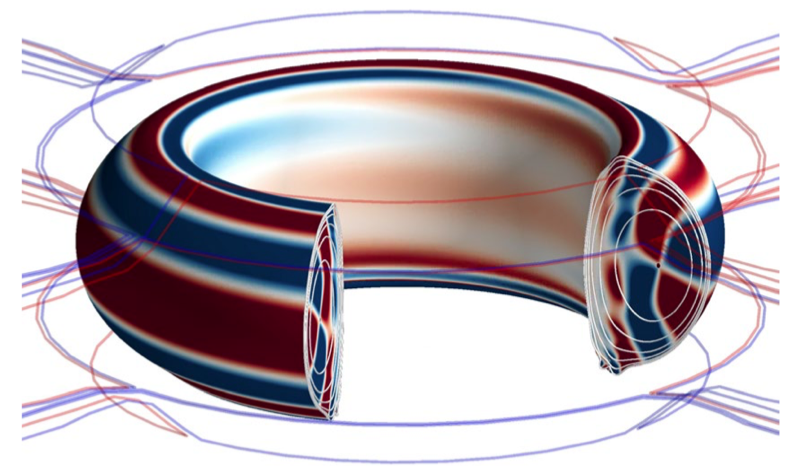Korean scientists have found a way to avoid damage to the tokamak walls due to plasma instability

Tokamak is a type of thermonuclear reactor; it is a toroidal installation for magnetic plasma confinement in order to achieve conditions under which it is possible to maintain a stable thermonuclear reaction. Work with them has been going on for several decades, and the end of this work has not yet been seen: there are no economically output reactors, as there wasn’t. One of the problems is the instability of the process; it is very difficult to keep it under control.
There are several difficulties; one of them is the instability of localized edge plasma flows. Researchers working with the KSTAR Tokamak installation demonstrated that they were able to control this problem. This is extremely important because, if not solved, the plasma can destroy the inner surface of the vacuum chamber.
It is worth noting that the problem is a consequence of the symmetry of the magnetic field of the installation - the symmetry that ensures simplicity (seeming) of work with tokamaks. One way to resolve this issue is to create external magnetic fields to suppress instability.
The most interesting thing is that some asymmetric configurations of the tokamak magnetic field can even be useful in terms of keeping the plasma in a stable state. The main thing here is to learn how to choose the “right” asymmetry, avoiding the appearance of those changes in the configuration of the magnetic field that may be harmful.
To solve this problem, the researchers created a simplified model of the set of magnetic fields necessary to maintain the plasma in a stable state. Using this model as an example, scientists began to look for options of an asymmetric configuration that can be useful in terms of maintaining plasma in a state of stability, preventing the destruction of the reactor walls. One of the conditions at the same time - the inner layers of the plasma should not be influenced by factors that affect the outer layers.
The positive point is that researchers do not need to know the final version of the exact geometry of the magnetic field. All that is required is to know when the size of the magnetic field becomes too large and its stability decreases.
Previous studies were devoted to determining the critical values of the fields, as well as creating the necessary geometry, calculating the field. This is necessary in order to cut off unfavorable for stability variants of the configuration of the magnetic field.

Now a team of researchers working with the Korean tokamak decided to find out which magnetic fields (additional) will suppress the instability, which ones - to prevent the destructive properties of the plasma, and which - to contribute to the appearance of instabilities.
Thanks to the functionality of KSTAR, scientists were able to study a variety of configurations, resulting in a 6D image, where each pixel is color-coded. In total there are three color gradations, each of which can be described as good, bad and very bad.
After the model was ready, scientists tested it by conducting a series of tests. As it turned out, they were able to detect the configuration variant that levels the instability of localized edge plasma flows. In order to create an optimal configuration, experts can increase the number of electromagnets that will help increase the customizability of magnetic fields.
According to experts, the work of scientists with the Korean tokamak will bring closer the moment when humanity still gets its almost infinite source of energy.
Nature Physics , 2018: DOI: 10.1038 / s41567-018-0268-8 .
